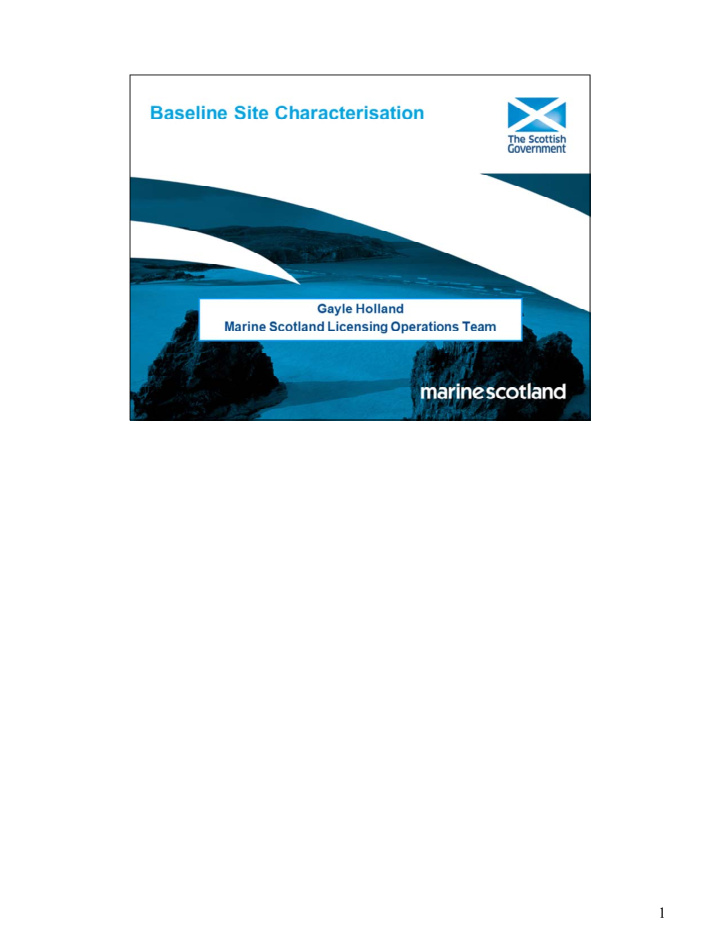



1
2
Flight height – understand that there is still an issues with this and digital aerial surveys. Use of Lidar/ tagging may help provide site specific flight height distributions Behaviour – feeding, loafing, travelling Age class/sex – some species possible to collect information on age class – Where immatures can be aged value obtained in the field surveys should be used (gannet and kittiwake) Where immatures cannot be aged a proportion of the population in stable age structure populations In a small number of species (typically large gulls ) in immature plumage it may not be possible to identify birds between species pairs in early age classes. In these cases (for example lesser black backed and Herring gull ) the specific proportions can be calculated from the known proportions of older age classes. Environmental covariates – i.e. prey distribution, weather etc - would welcome discussion about how this information could be incorporated into baseline characterisation 3
Aware that there are various aerial survey providers 2 years baseline is considered a minimum, may be a requirement for further surveys if for example high variation between years Several of the DPO sites are large and may be subject to multiple leases – encourage collaboration where possible. Decreases cost, increases quality of information, provides regional context 4
We are aware that there are different ways in which images are taken, video and stills as well as transect and grid survey design options – not get into detail here but developers should consider what is required in terms of the questions to be addressed (e.g. around levels of precision of characterisation of bird populations and distributions within agreed survey areas). Developers should provide associated supporting information and justification around proposed survey designs. Buffer – SNH will be finalising advice on this. Dependant on species. Some species such as RTD understood to be very susceptible to disturbance therefore wide buffer are advised. If species recorded at site are understood to be less susceptible to disturbance then may be appropriate to have a reduced buffer. Until SNH guidance on this is finalised advice will be provided on case by case basis. Frequency/duration – monthly surveys over 2 years. Consideration given to time of day, sun glare, weather, order of survey as birds often most active at first and last light. Sites further offshore may not be possible to survey whole site in one day during the winter due to distance from shore and short daylight hours. Therefore further discussion may be required on how to best address this. Additional survey techniques – for sites which have species which we have less understanding of, may be necessary/helpful to undertake tagging work to better understand connectivity. If there is historical data available this can be useful in adding context, looking at trends. MSS currently running a project 5
looking at how to combine data from different survey platforms. Colony counts – if there are gaps in recent colony counts, may be required to fill these. 5
6
MRSea – produces a modelled distribution by extrapolating between transects/grids potentially incorporating habitat gradients eg bathymetry. Ecological way of modelling a distribution 7
Recommend
More recommend